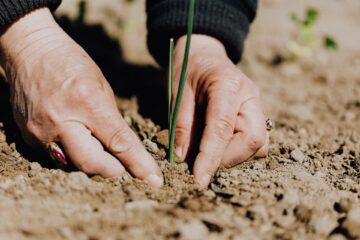![]()
Introduction
Traditional Medicine knowledge is a very important aspect specially in a country like India. It determines the passage of knowledge and its development from one generation to another. This transmission usually works within a community or family. It has gained a critical position in the Intellectual Property Rights. The knowledge passed through generations is a store-house of information of geographical flora and fauna. However, protecting such knowledge has been a challenge for these locals and communities.
As the world is progressing, hunger for more resources has been increasing. These natural treasures of resources are being exploited and extracted in abundance for commercial use. Greed is also due to the fact that these resources are the foundations of new inventions. The existing Intellectual Property Regime works on the basis of personal ownership of rights of creation and thus affects the benefits that are to be given to the locals and the communities of their traditional knowledge. The patent law in India works for private profit and creates a monopoly. However, the importance of Traditional Knowledge is now being recognized throughout the world.
The biggest and most unique identity of Indian medicine is Ayurveda. It is only in recent years that Ayurveda has gained its due recognition because of globalization and the expansion of scientific and medical fraternity. The provisions of Intellectual Property Rights under the World Intellectual Property Organization (WIPO) and Patents have constructed a way for many individuals and organizations to gain commercial benefits with traditional knowledge of Ayurveda.
Brief
Traditional Medicine
Developing countries are yet not fully occupied with all modern medicines and medical services. Many parts of a country like India are still under-developed and lack medical privileges. In such cases, Traditional Medicines play a very crucial role in the health care field. These medicines work as boons for remote areas and poor people. The World Health Organization (WHO) explains traditional medicine as an aggregate of all the knowledge and practices. Such knowledge may be deciphered or not. It may be used in diagnosis, prevention, and elimination of physical, mental, or social imbalance.
Reliance shall be placed exclusively on practical experience and observations which have been transmitted from generation to generation, either verbally or in writing. Bodies relating to the health- care field are trying to incorporate these Traditional Medicine Knowledge into mainstream commercial activities.
To protect it from commercial exploitation, many proposals have been made to develop sui generis systems of protection. These proposals work on the agenda of giving similar compensation to the Traditional Knowledge holders to that of innovators utilizing the knowledge.
Traditional Medicine Digital Library
India in an attempt to formulate all the medical databases, pioneered Traditional Medicine Digital Library (TKDL). It is a computerized information of 34 million pages of information which is formatted medicinal formulations. TKDL works on Indian medicinal fields such as Ayurveda, Unani, Yoga, Naturopathy, and Siddha that are available publicly. The traditional knowledge database is available in several languages such as Sanskrit, Urdu, Tamil, Arabic, Persian, and the languages used by the patent examiners of major IP offices.
Origin of Traditional Medicine Digital Library
The birth of TKDL happened through the collaboration of the Council of Scientific and Industrial Research (CSIR), and the Department of AYUSH. The purpose of the creation of TKDL was to make efforts to revoke the patent that was granted on healing properties of turmeric by the United States Patent and Trademark Office (USPTO) and another patent granted by the European Patent Office (EPO) on neem’s antifungal properties. Although, these efforts were victorious; it turned out to be expensive and consumed a lot of time. TKDL was established in 2001. Procedure for granting of a patent, the applicant has to satisfy criteria laid down by the national patent law. The applicant must further prove that invention in hand is novel and previously unknown to mankind.
Case Laws
- Turmeric Patent Case:
Turmeric is an herb found very commonly in India. Since ancient times turmeric has been utilized in India for food, self- care, medicine, etc. Turmeric and its uses have been a very essential part of our culture. A patent on the use of wound healing properties of turmeric was granted to two Indians based in the United States on 28 March 1995. The applicants had claimed that it was their novel finding that an effective amount of turmeric through local and oral routes shall enhance the process of wound healing. It is a prerequisite that an application must be novel, non-obvious, and useful to be granted as a patent. To the dismay of the applicants, the Council of Scientific and Industrial Research (CSIR) found 32 references in various languages such as Sanskrit and Urdu which proved that this use of turmeric was not novel as it was a well-established use in India prior to the filing of this patent. Owing to such findings the CSIR filed a formal request for re-examination for the said patents. On the basis of re-examination, the examiner revoked the patent in 1997 on the basis of lack of novelty.
- The case of Amazon Rainforest Plant Patent:
This case had a similar essence to that of the Turmeric case. The plant in conflict is called Baniste-riopsis caapi. It was collected and used by the indigenous tribes of the Amazon. They used it to produce a ceremonial drink called ‘Ayahuasca’ or ‘Yage’. A Plant Patent was issued to Loren Miller on 17 June 1986. Miller claimed rights over a supposed variety of B. caapi, which she called ‘Da Vine’. In November 1999, the US Patent and Trademark Office rejected and revoked the patent on the basis of the fact that the application neither distinctive nor novel.
- Neem Oil Case:
Neem is used in India for its herbal properties for a very long time. W.R. Grace and the Department of Agriculture, United States, first filed for a patent in the European Patent Office. The patented was filed for the method of using neem oil for the control of fungi on plants. India filed a legal opposition to this application owing to its long use of the product in the same method. The EPO revoked the patent owing to lack of novelty and inventive step. This step was followed by several US patents that were taken down on Neem-based emulsions and solutions.
Conclusion
Traditional Knowledge must be considered much more than just definitely, is a cultural heritage for a country. It is a treasure of resources that must be valued and be used carefully without exploiting it. It contributes a lot to a country’s economy and its development. It is extremely necessary to have proper laws and provisions to safeguard Traditional Knowledge. It is of the utmost importance that the rights of the holders of these resources must be preserved.
Current provisions of the Patent law of India are insufficient for obtaining an obstructive patent on Ayurvedic medicines. We must include researchers, scholars, scientists to amend and correct this obstruction and insufficiency.



0 Comments